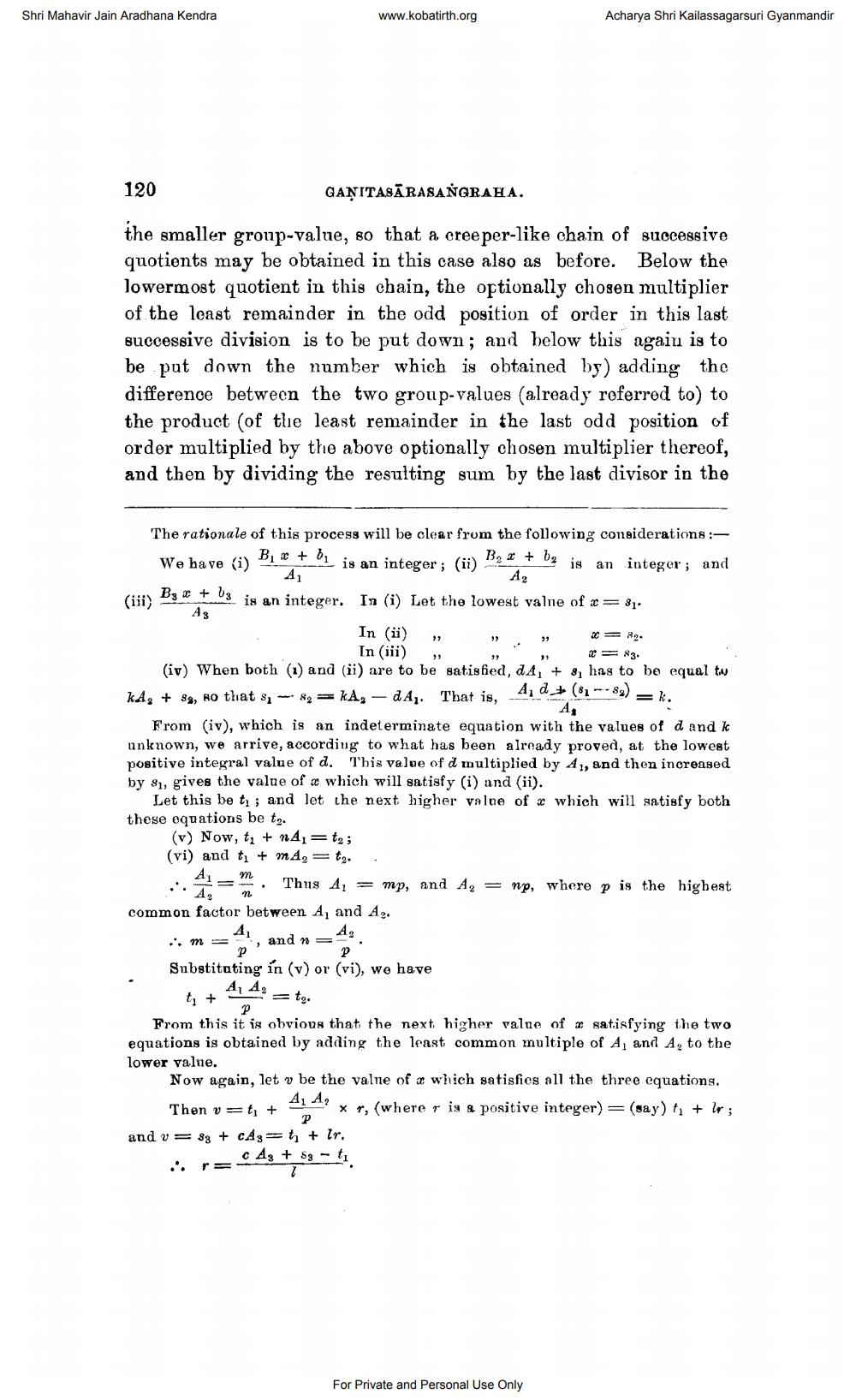________________
Shri Mahavir Jain Aradhana Kendra
www.kobatirth.org
Acharya Shri Kailassagarsuri Gyanmandir
120
GANITASĀRASANGRAHA.
the smaller group-value, so that a creeper-like chain of successive quotients may be obtained in this case also as before. Below the lowermost quotient in this chain, the optionally chosen multiplier of the least remainder in the odd position of order in this last successive division is to be put down; and below this agaiu is to be put down the number which is obtained by adding the difference between the two group-values (already referred to) to the product (of the least remainder in the last odd position of order multiplied by the above optionally chosen multiplier thereof, and then by dividing the resulting sum by the last divisor in the
The rationale of this process will be clear from the following considerations :
B2 * + b2 is an integer; and 1 is an integer; (ii) 52
We have 6) Bi + b
A1
A,
(iii) Byc 03 is an integer. In (i) Let the lowest valne of a = 31. Ag In (ii) 2
3
= R2. In (iii) ? (iv) When both (1) and (ii) are to be satisfied, dA, + 8 has to be equal t. kA, + 89, so that 8, 8, KA, - 84. That is, 41a (81 -- 89) = k.
LA From (iv), which is an indeterminate equation with the values of d and k unknown, we arrive, according to what has been already proved, at the lowest positive integral value of d. This value of d multiplied by Aj, and then increased by 81, gives the value of a which will satisfy (i) and (ii).
Let this be tı; and let the next higher value of x which will satisfy both these equations be ts.
(v) Now, to + n4=ta; (vi) and ti + m 2 = t. .
..^=". Thus 4, = mp, and Ag = np, where p is the highest common factor between A, and A2.
.. m = , and »=4. Substituting ín (v) or (vi), we have
pP
4, A2 = to.
From this it is obvious that the next higher value of a satisfying the two equations is obtained by adding the least common multiple of A and A, to the lower value.
Now again, let v be the value of a which satisfies all the three equations. Then v=t+
+ 44,
19 x r, (where is a positive integer) = (say) 4. + lr ;
1P and v= 33 + cAg = t + Ir.
.. r=cAg + $g - t
For Private and Personal Use Only




